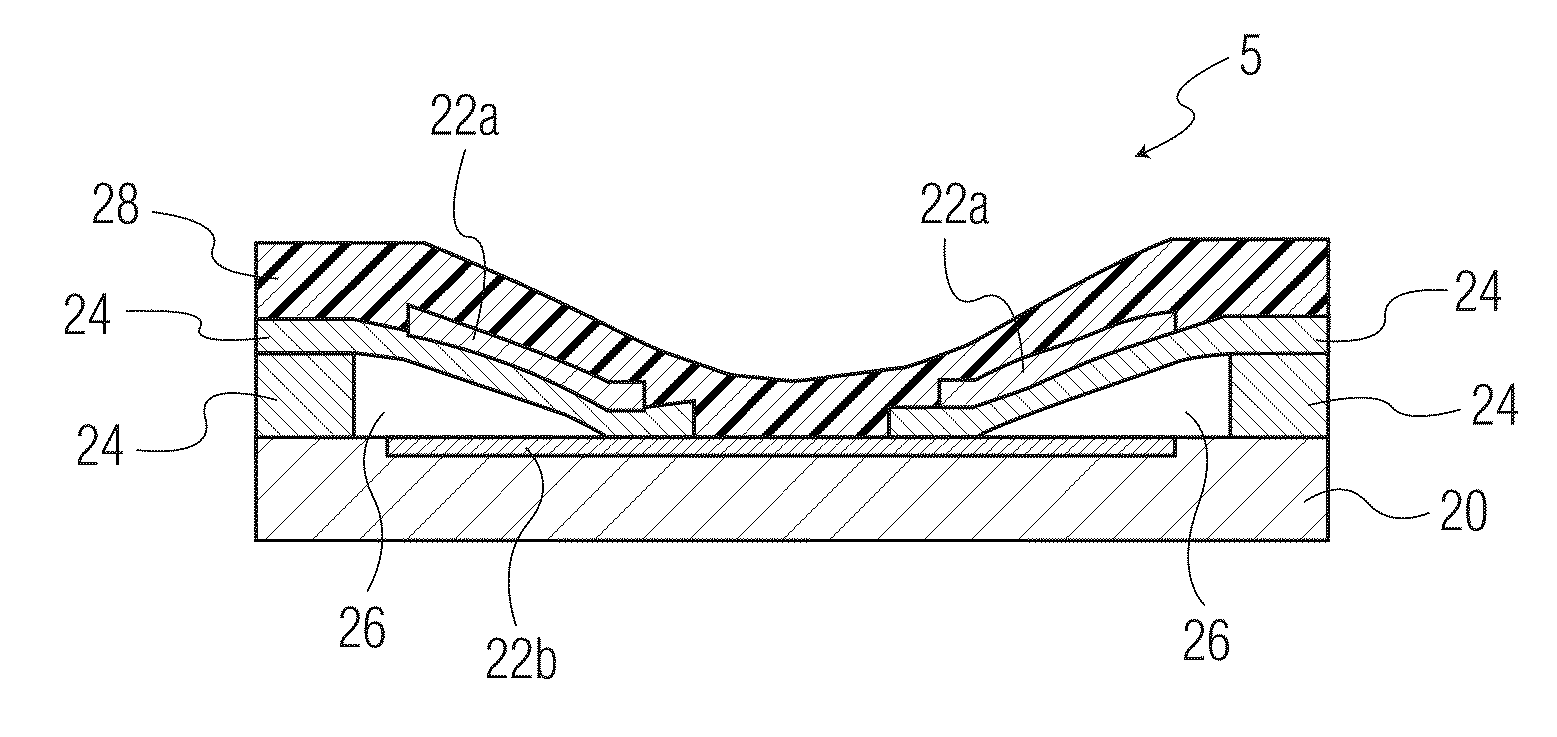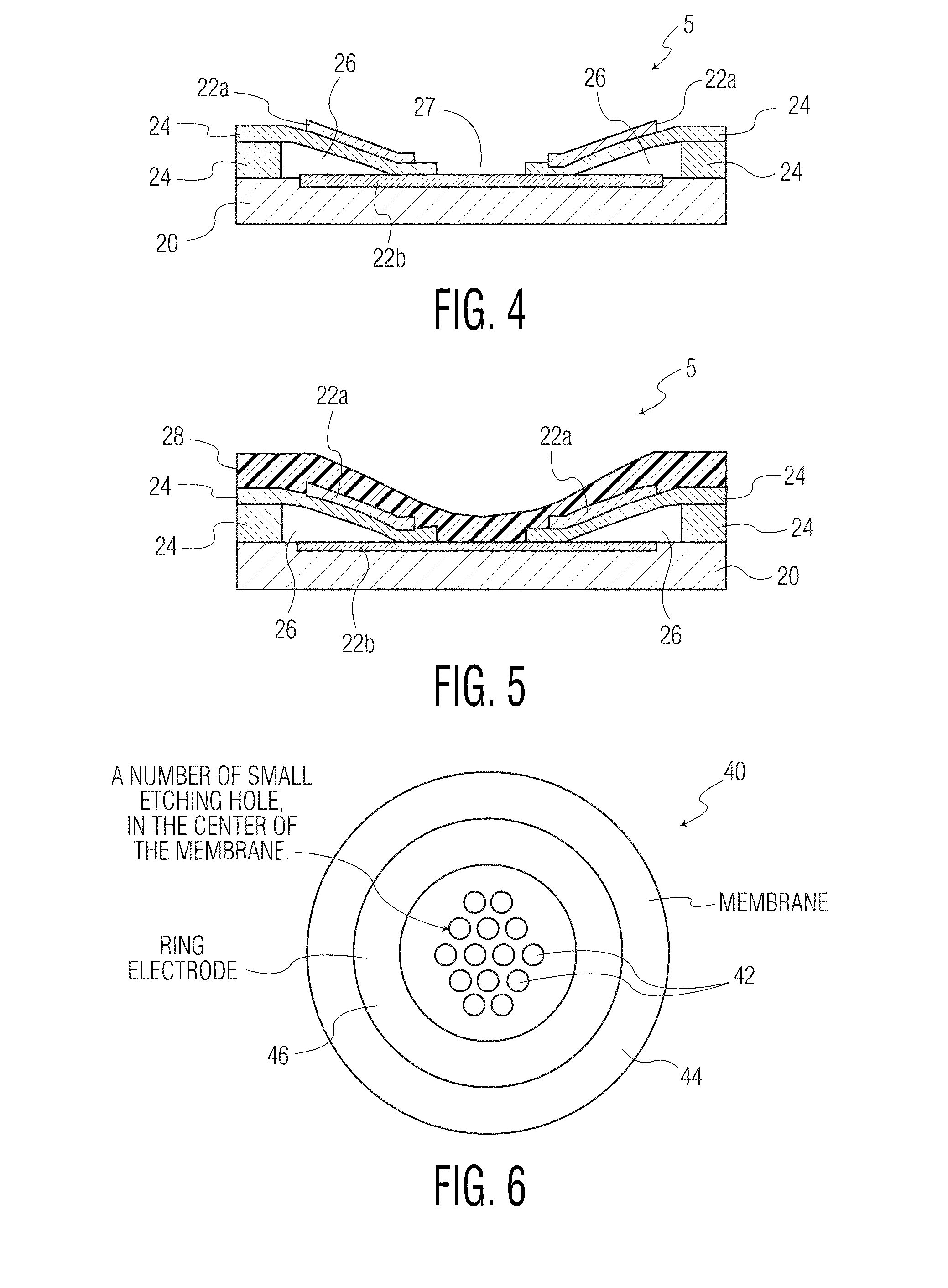Method for production and using a capacitive micro-machined ultrasonic transducer
a micro-machined ultrasonic transducer and capacitive technology, applied in the field of acoustic imaging, can solve the problems of low production efficiency, high cost, and inability to compete competitively, and achieve the effect of high collapse voltage and cost-effective improvement of manufacturing standards
- Summary
- Abstract
- Description
- Claims
- Application Information
AI Technical Summary
Benefits of technology
Problems solved by technology
Method used
Image
Examples
Embodiment Construction
[0040]Exemplary methods for production of pre-collapsed cMUTs are provided according to the present disclosure. To assist those of ordinary skill in the relevant art in making and using such exemplary methods, appended figures are provided, wherein sequential steps of exemplary manufacturing methods are depicted.
[0041]Exemplary methods for fabrication of collapsed cMUTs according to the present disclosure typically include the following steps: (1) obtaining a nearly completed cMUT as depicted in FIG. 2, (2) defining at least one hole (and optionally a plurality of holes) through the membrane layer for each cMUT element as depicted in FIG. 3, (3) applying a bias voltage across the membrane and substrate layers so as to collapse the membrane layer relative to the substrate layer as depicted in FIG. 4, and (4) fixing and sealing the collapsed membrane layer relative to the substrate layer as depicted in FIG. 5.
[0042]With initial reference to FIG. 2, a schematic cross-section of a cMUT ...
PUM
| Property | Measurement | Unit |
|---|---|---|
| DC voltage | aaaaa | aaaaa |
| DC voltage | aaaaa | aaaaa |
| diameter | aaaaa | aaaaa |
Abstract
Description
Claims
Application Information
 Login to View More
Login to View More - R&D
- Intellectual Property
- Life Sciences
- Materials
- Tech Scout
- Unparalleled Data Quality
- Higher Quality Content
- 60% Fewer Hallucinations
Browse by: Latest US Patents, China's latest patents, Technical Efficacy Thesaurus, Application Domain, Technology Topic, Popular Technical Reports.
© 2025 PatSnap. All rights reserved.Legal|Privacy policy|Modern Slavery Act Transparency Statement|Sitemap|About US| Contact US: help@patsnap.com



